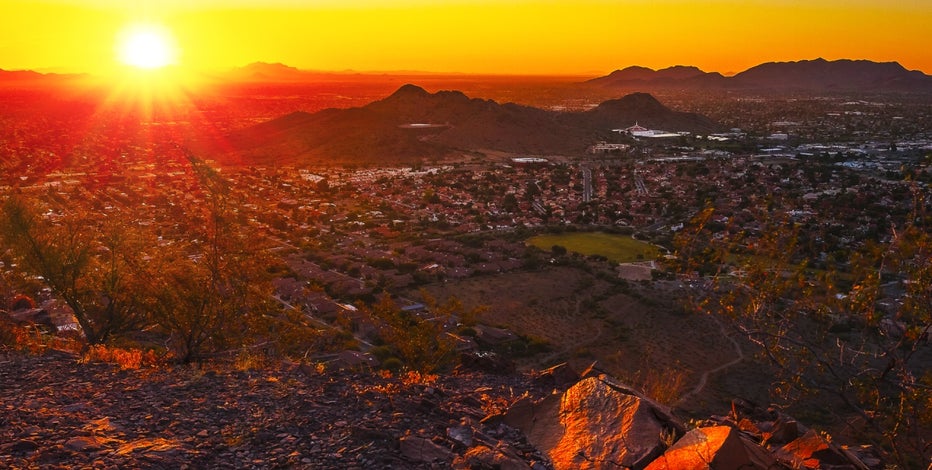Explaining Phoenix's urban heat island phenomenon
The hottest day ever in Phoenix: A deeper look
With all these records, one thing is clear: temperatures around Downtown Phoenix tend to be a few degrees hotter than surrounding parts of the East, West or even North Valley. But why? A big factor is the Valley's Urban Heat Island. Concentration of buildings, concrete and asphalt absorb more heat, and hold on to it throughout the night. Meteorologist Krystal Ortiz explains the impacts of our rapidly growing city.
PHOENIX - The all-time record hottest morning low was set Wednesday at 97 degrees. By the afternoon, the temperature reached 119 degrees at Sky Harbor Airport-- tied for 4th hottest ever recorded in Phoenix.
In fact, the average temperature (between morning low and afternoon high) made Wednesday, June 19 the hottest day ever in Phoenix at an average of 108 degrees.
The previous record was 106.5 degrees set on the same day we reached 122 degrees: June 26, 1990. With all these records, one thing is clear: temperatures around downtown Phoenix tend to be a few degrees hotter than the surrounding areas.
Something called the urban heat island plays a role in how high those temperatures go and how much they vary across the Phoenix metropolitan area.
We've got rural areas, we've got the downtown area, and then we have suburban areas where our neighborhoods are. They all play a different part in how hot those temperatures go in the areas where there are more buildings, more concrete, more asphalt.
Downtown, urban areas tend to have higher emissions due to having more traffic and vehicles.
We're absorbing more heat during the day thanks to the ground surface, and that temperature quickly climbs hotter than the surrounding parts of the Valley.
But there are more factors at play here. Moisture helps to keep things a bit cooler.
If you've got more concrete, you're going to have less moisture, and we've got fewer trees in our downtown areas than in more rural parts of the Valley. More trees equals more shade, and it also means slightly cooler conditions out there.
Overall, during the afternoon, the high temperatures are going to be hottest in our downtown zones.
In the evening, the concrete, asphalt and buildings downtown retain the heat from the daytime and slowly release it as the sun goes down.
That means the temperature stays much hotter at night. That's why you'll see lows in the 80s in some areas and 90s in others.



